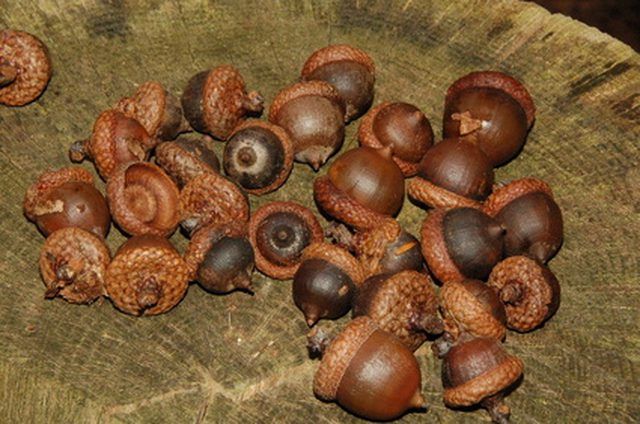Bulbs
Flower Basics
Flower Beds & Specialty Gardens
Flower Garden
Garden Furniture
Garden Gnomes
Garden Seeds
Garden Sheds
Garden Statues
Garden Tools & Supplies
Gardening Basics
Green & Organic
Groundcovers & Vines
Growing Annuals
Growing Basil
Growing Beans
Growing Berries
Growing Blueberries
Growing Cactus
Growing Corn
Growing Cotton
Growing Edibles
Growing Flowers
Growing Garlic
Growing Grapes
Growing Grass
Growing Herbs
Growing Jasmine
Growing Mint
Growing Mushrooms
Orchids
Growing Peanuts
Growing Perennials
Growing Plants
Growing Rosemary
Growing Roses
Growing Strawberries
Growing Sunflowers
Growing Thyme
Growing Tomatoes
Growing Tulips
Growing Vegetables
Herb Basics
Herb Garden
Indoor Growing
Landscaping Basics
Landscaping Patios
Landscaping Plants
Landscaping Shrubs
Landscaping Trees
Landscaping Walks & Pathways
Lawn Basics
Lawn Maintenance
Lawn Mowers
Lawn Ornaments
Lawn Planting
Lawn Tools
Outdoor Growing
Overall Landscape Planning
Pests, Weeds & Problems
Plant Basics
Rock Garden
Rose Garden
Shrubs
Soil
Specialty Gardens
Trees
Vegetable Garden
Yard Maintenance
How to Start Oak Trees From Acorns
How to Start Oak Trees From Acorns. There are four main categories of oak trees including white oak, red oak, burr oak and pin oak. Each type of oak tree grows acorns and sheds them in autumn. Harvesting acorns to start oak trees is the first step in a yearlong process to obtain an oak tree sapling that is ready to transplant into a permanent place...

There are four main categories of oak trees including white oak, red oak, burr oak and pin oak. Each type of oak tree grows acorns and sheds them in autumn. Harvesting acorns to start oak trees is the first step in a yearlong process to obtain an oak tree sapling that is ready to transplant into a permanent place in the yard. This process includes transplanting the acorns four times to larger containers, keeping the acorns damp and hardening them off for their final destination.
Things You'll Need
Acorns
Peat mix
Plastic sandwich bag
Bowl
Styrofoam cups- 8 oz., 16 oz., 32 oz.
Place acorns in a plastic sandwich bag with a mixture of 50 percent peat mix or leaf mold and add water to obtain a moist mixture. Choose acorns that are round and swollen for the best results. Harvest acorns off the ground as soon as they fall so they are not rotting.
Close the bag and place in a refrigerator that is 32 to 35 degrees Fahrenheit. Check the bag weekly, and add some water as need be to keep the mixture damp.
Mix potting soil and sphagnum moss in a 50/50 mixture in a bowl. Fill 8 oz. styrofoam cups with the mixture leaving about 1 inch at the top without soil. Use a pencil to pierce the cups in three to four holes near the bottom of the cup for drainage. Plant one acorn per cup so that it lies on its side barely underneath the soil mixture. Water the acorn as often as need be to obtain moist soil and set it on a southern windowsill. This step is best to do from April 15th to the 20th.
Harden off plants about May 15th. The stalk on the acorn tree is 5 to 6 inches tall at this point, and the first set of leaves is spread out. Take the cups outside for a few hours per day to acclimate them to the outdoor elements. Increase the time outside each week over the next two weeks until the oak trees remain outdoors all day and take them inside at night.
Transplant the oaks trees to 16 oz. styrofoam cups in late May in the same manner as the 8 oz cups. Keep trees outside at all times and keep them damp. Transplant the oak trees to 32 oz. styrofoam cups after the second flush of leaves using the same process for soil mixture and holes for drainage.
Transplant the oak trees to a permanent place in the ground in the fall or spring. To plant the trees in spring, leave them inside a garage or other structure and do not allow them to freeze. Make sure to leave enough room for adequate growth and to keep damp. Place a cage or other material around the entire tree to discourage rabbits, birds and deer from eating the young sapling.
Tips & Warnings
Observe the young trees when they are outside, including examining the leaves and trunk for any signs of pests.
Upon transplanting oak trees into a 16 oz cup, they may require a liquid fertilizer in a weak solution. Mix the solution at half strength so that the young trees receive nourishment without stress or dying.